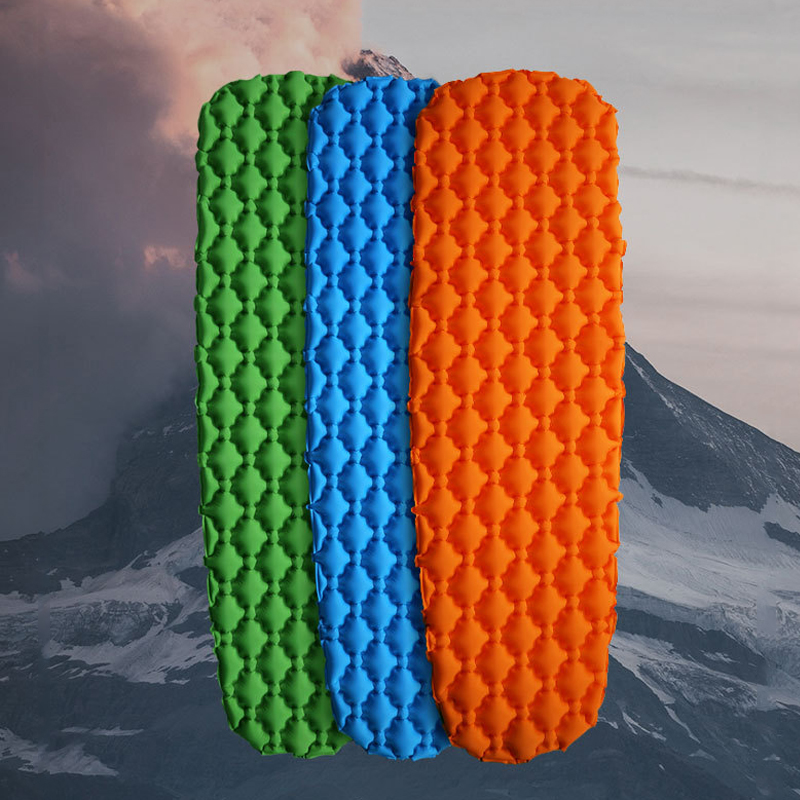The function of outdoor camping moisture-proof pads
Some friends may have some understanding of why camping requires sleeping mats in addition to sleeping bags and tents. Here is a brief explanation
There are four pathways for heat loss in the human body: evaporation, convection, conduction, and radiation. Among them, conduction and convection heat dissipation are the most common, and when sleeping, the loss of heat from conduction accounts for the majority

If you sleep directly on the ground outdoors, the result is that no matter how thick the sleeping bag is wrapped, you will feel cold because the ground is constantly absorbing your heat. Heat loss can be severe, ranging from inability to move the next day to direct loss of temperature at night.
Sleeping mats (commonly known as “moisture-proof mats” by mountain enthusiasts in China) have become indispensable equipment for outdoor activities in the sense of isolating the cold earth. Compared to the bed at home, they are lightweight and easy to pack, making them beds for outdoor people.

The necessity of a sleeping mat is beyond doubt. There are a variety of sleeping mats on the market, how to evaluate their superiority and choose from the best?The primary consideration should be the main mission of the sleeping mat – keeping warm.
The most important insulation indicator: R-value
The R-value is an important parameter used by many sleeping bag manufacturers to indicate the warmth retention ability of their sleeping pads.R-Value, also known as R-Value, is named after the English phrase ‘Thermal Resistance’ and is used to measure the ability of an object to conduct adiabatic heat. The higher the R-value, the stronger the insulation ability. The R-value is a universal scale for the materials industry and is not exclusive to outdoor use.

When it comes to the R-value of a sleeping mat, if it drops, you will need to spend more energy to maintain your body temperature while sleeping on it. As a result, you will wake up tired the next day and have no energy to do anything because everything you eat produces heat. On the contrary, if the R value of the sleeping mat is in place, you can save valuable heat and use it for high-intensity outdoor activities the next day.https://naturoutdoor.com/product/camping-sleeping-pad-air-mattress
Generally speaking, in autumn and winter, when the temperature is slightly below 0 ℃, the R value of the sleeping mat should not be less than 3. In extreme high altitude and cold camping environments, the R value should be close to or higher than 5. In other warmer environments, an R-value of 2 or above is sufficient (data source: comprehensively compiled from the R-value temperature scales of major sleeping bag manufacturers).
The R value is the most important indicator when we purchase sleep cushions online, but it is quite embarrassing that there is no unified method for measuring the R value from various manufacturers. Large manufacturers have relatively fair testing plans, while some manufacturers use body feel estimation, and some manufacturers do not even provide a reference for the R value. Therefore, before directly referring to the R value provided by the manufacturer, we need to learn more about the thermal insulation performance of the sleeping mat.

